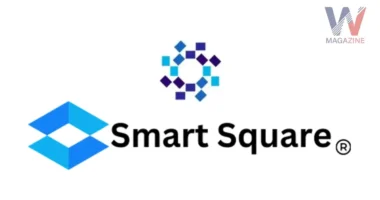Table of Contents
Content Centric Networking (CCN) is a smarter internet model that focuses on what content you want not where it lives. Unlike traditional networks that rely on IP addresses, CCN lets you request content by name. This shift brings faster loading, less wasted bandwidth, and stronger security all without needing deep tech jargon.
What Makes CCN More Efficient?
In Network Caching
When multiple users request the same content, CCN stores (caches) it in nearby routers. The next time someone wants it, the content comes from the closest cache not the original server. This cuts down travel time and saves bandwidth.
Named Data Instead of Addresses
Instead of tracking packets by destination IP addresses, CCN uses “Interest” packets referencing content names. Routers forward based on names, which simplifies routing and speeds up retrieval.
Efficient Delivery
CCN natively supports multicasting where one response feeds many requests. That avoids sending separate data streams to each user, which reduces congestion during popular events or viral content.
Why CCN Means Better Performance?
Reduced Latency
By caching locally, CCN reduces the number of network “hops” data must travel. If a request hits a cache close by, response time is much faster than going to the origin server.
Bandwidth Savings
Avoiding repeat downloads from distant servers saves backbone bandwidth. This is crucial as video streaming and large file sharing grow worldwide.
Scalable to Demand
When many users request the same content like a live stream CCN handles it seamlessly. Popular content spreads across the network naturally, balancing demand without overwhelming any single server.
Built In Security: Securing Content, Not Paths
Data Centric Security
Each data packet in CCN is digitally signed by its creator. This ensures authenticity no matter where you retrieve it trust stays with the content itself.
Defense Against Tampering
CCN handles all packets as signed content, including network control messages. This makes it much harder for attackers to spoof or intercept data.
Interest and Flood Attack Protection
Routers track pending requests. That stateful tracking helps identify and block overly aggressive request floods making DoS attacks harder.
Addressing New Security Challenges
Cache Privacy Risks
Since routers cache content, a malicious user could probe caches to see if others requested specific content recently. Timing and cache attacks are possible.
Mitigation: Techniques like randomized cache expiry, encrypted names, or strict signature checks can help limit exposure.
Content Poisoning
Attackers might inject false data into caches by creating fake signed packets:
Solution: Routers must validate signatures before caching, and some architectures include revocation lists to ignore known bad content.
Why CCN Matters Today?
Aligns with Modern Use Patterns
The internet now focuses on content streaming, video, file sharing, and social media not just host-to-host communication. CCN is built exactly for this shift.
Ideal for Mobile and Edge Computing
CCN handles intermittent connections well. Even when users roam or disconnect briefly, cached content nearby keeps things flowing perfect for edge-intensive applications.
Stronger Security Model
By securing content rather than the route, CCN simplifies trust in distributed environments. Even if content comes from any cached source, signature checks ensure data integrity.
Real World Adoption & Research
- PARC & Cisco: released an open-source CCN implementation in 2016, and Cisco later acquired the tech.
- Academia and industry :(Huawei, Intel, Samsung) are actively researching enhancements in caching strategies, encryption, and access control.
How Content-Centric Networking Works?
Content-Centric Networking (CCN) changes the way we search and share information online. Unlike traditional networks that rely on IP addresses to locate data, CCN allows devices to find and access content based on its name not its location. This approach makes the network faster, more efficient, and more adaptable for today’s digital demands.
In a CCN-based system, devices first send out Interest packets to request specific content. Once a match is found, the requested data is returned to the sender. This process doesn’t rely on static routes or server addresses; instead, it depends on the content’s name. That’s why CCN is often described as a data driven or name based network.
Key Features That Make CCN Powerful
CCN is not just about a new way to fetch content it brings several enhancements to network communication, especially when used with devices like IoT sensors, mobile apps, and cloud systems. Here are some of the top features that define content-centric networking:
1. Fast Data Transmission
Because CCN caches content within the network, users can often retrieve data from nearby routers, reducing download times and traffic on the core internet.
2. Name Based Architecture
Every piece of content is identified by a unique name. This is different from traditional packet-based networks, where communication is centered around host IPs. CCN uses this Named Data Networking (NDN) model to shift focus from where the content is to what the content is.
3. Pull Based Communication
CCN follows a request-response style. That means data is only delivered when a device expresses interest nothing is sent unnecessarily. This helps control traffic and improves overall efficiency.
Final Thoughts
Content-Centric Networking (CCN) represents a major evolution in how we access and share data online. By focusing on content names instead of server locations, CCN delivers faster performance, better bandwidth use, and built-in security. Its caching, multicast, and data-centric trust make it ideal for modern internet needs like mobile, streaming, and IoT. As digital demand grows, CCN offers a smarter, more resilient networking model for the future.
Related Topic: Smart Networking: What Is an Application Virtual Switch?








